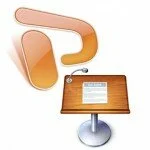 I’ve written about the importance of keeping a pitch deck lean, and about the importance of practicing your delivery, about what it should contain and about how to give it the required flow. But a recent exchange with my friend Pete McDonald at Silicon Valley Bank reminded me I haven’t spent a lot of time on another critically important document, the executive summary. It’s time the executive summary got its due. Pete hit me up with a few questions on how he should advise entertrepreneurs on executive summaries and here is what I told him. [Read more…]
I’ve written about the importance of keeping a pitch deck lean, and about the importance of practicing your delivery, about what it should contain and about how to give it the required flow. But a recent exchange with my friend Pete McDonald at Silicon Valley Bank reminded me I haven’t spent a lot of time on another critically important document, the executive summary. It’s time the executive summary got its due. Pete hit me up with a few questions on how he should advise entertrepreneurs on executive summaries and here is what I told him. [Read more…]
Archives for March 2014
Why Should I Sweat My Executive Summary?
Pitch Deck Basics
 Creating and delivering a great pitch requires both using the right building blocks and putting them together properly. I cover the more advanced topic of crafting an effective deck here, but first you need to understand the building blocks. (If executive summaries are your hang-up, I dealt with them here, and I’ve talked about the importance of keeping a pitch deck lean here, and about the importance of practicing your delivery here.)
Creating and delivering a great pitch requires both using the right building blocks and putting them together properly. I cover the more advanced topic of crafting an effective deck here, but first you need to understand the building blocks. (If executive summaries are your hang-up, I dealt with them here, and I’ve talked about the importance of keeping a pitch deck lean here, and about the importance of practicing your delivery here.)
Reminder – You Need Two Versions
Before we do anything, we need to be clear about one thing: you should have two different versions of your deck – one that has lots of white space and relatively few words that you use as a back-drop to a live presentation, and one that has enough words that it can stand on its own if you need to email it to someone. Never email the first type or present from the second type. And don’t try to get by on just one version. Both mistakes are going to lead to bad results.
MetaData
Probably the single most important data to include in your deck is your contact info – list every single means of getting in touch with you. Sounds like a given, but the stories I could tell you… Second helpful thing to consider is a small compact box somewhere with some basic metadata about the company: website, stage of development, capital raised, capital seeking, lawyers, accountants, key investors, date founded. That meta data can be at the end, but it is pretty handy right at the beginning in a quick facts slide or quick facts box.
Main Contents of Your Deck
What does the deck need to have in it? The deck should talk about the following items – no more, no less. Any order you think makes sense. And it should cover them in a 10-15 slide deck that can be delivered in 10- 15 minutes:
1. Customer Problem
- description of customer pain
- how you solve it – concept & key elements
2. Overview of your Product/Solution
- what you do & for whom
- why it’s compelling
3. Key Players:
- founders & key team members
- key advisors
- industry backgrounds, expertise
4. Market Opportunity:
- market size
- market growth characteristics
- market segmentation
- why you can grow faster than the market and the competition
5. Competitive Landscape
- current and future competitors
- detailed chart on competitive feature sets
- summary of your sustainable competitive advantages
6. Go-To-Market Strategy
- how you will sell your product/solution
7. Stage of Development & Key Milestones
- product development
- customer acquisition
- partner relationships
8. Critical Risks & Challenges
- what can go wrong and how you plan to manage it
9. Financial Projections
- five years out (and you must show Yr5 mid-case, worst case and best case with key assumptions)
- how much time & money it will take to get to cash flow break-even
10. Exit Options
- categories of likely buyers
- rationales
- list of specific likely buyers
- comparables with valuation multiples
11. Funding Requirements
- how much you presently seek
- how much runway it will give you
- what you are going to use it for
- what milestones it will allow you to achieve
- why your company will be more valuable when you reach each milestone
Beyond that, you really don’t want or need much. You can add an appendix covering some details on certain subjects you want to have handy in case you get asked, but that is about it. Trying to do much more is not going to make your pitch more effective, it is going to merely draw it out and increase the likelihood that you will not get through it, which can be the kiss of death. Remember details can be drawn out in the Q&A and during subsequent due diligence, so it is not appropriate to go into depth in the pitch; instead you should focus on covering all of the key elements so you get the next meeting.
Couple Final Notes on Mechanical Construction and Delivery
Do not use complicated animations or builds in your deck – they make it very hard to go backwards if you need to. Do not build in any internet-dependent content such as demos or videos – the projecting machine may not be connected to the internet and even if it does have a nice fast connection it may not have a player for your codec or there may be no provision for audio. You should also plan ahead to avoid last minute changes to your deck – planning to “swap in a newer draft” when you arrive can be a mess – AV fumbling while everyone waits for you makes an unprofessional first impression and wastes your presentation time.
You may want to avoid exotic presentation programs like Prezi. Even PowerPoint can be pretty buggy on some machines. Consider converting your deck into PDF format and sending both that and PPT, but check the PDF conversion before sending to make sure it didn’t introduce any embarrassing font substitutions or wacky line breaks. Keep it simple – this pitch is about you as much as anything. Do not plan to spend time on product demos – perhaps a couple screenshots if necessary to understand the product, but you do not have time for demos. Plan for the worst in terms of screen size: do not use any small font sizes – keep it large and legible. And finally, bring multiple copies of your presentation different memory sticks, just in case, as well as your own remote control – one you are familiar with. If it makes more sense to use one that is provided, get familiar with it before starting so you don’t get flustered and make a hash out of your presentation.
Now you can go read about the crafting of an effective and compelling deck.
Comments, questions or reactions to this post? Leave a note below and I will respond to your questions.
If you enjoyed this post, you might enjoy my other posts on Angel Investing, Communication, Entrepreneurship, Video Interview Series, or my recent curated links you might have missed on: Investing & Entrepreneurship.
Subscribe – To get an automatic feed of all future posts subscribe to the RSS feed here, or to receive them via email enter your address in the box in the upper right or go here and enter your email address in the box in the upper right. You can also follow me on Twitter @cmirabile and on Google+.
 March 2014: The New York Times reports this week that at this year’s Mobile World Congress in Barcelona, the giant smartphone trend is not only continuing, but accelerating. I was just in a meeting the other day with one of those monsters, and I could barely take my eyes off it it. Some kind of a Samsung with a screen well over 5 inches diagonally. By the time you add the heft of its aftermarket silicon rubber case, the thing was about the size and thickness of a 350 page paperback book .(But not the same weight as a book – that Samsung brick is going to really pull down one side of your coat – and forget about your jeans pocket.) Screen was pretty flashy-looking, though.
March 2014: The New York Times reports this week that at this year’s Mobile World Congress in Barcelona, the giant smartphone trend is not only continuing, but accelerating. I was just in a meeting the other day with one of those monsters, and I could barely take my eyes off it it. Some kind of a Samsung with a screen well over 5 inches diagonally. By the time you add the heft of its aftermarket silicon rubber case, the thing was about the size and thickness of a 350 page paperback book .(But not the same weight as a book – that Samsung brick is going to really pull down one side of your coat – and forget about your jeans pocket.) Screen was pretty flashy-looking, though.